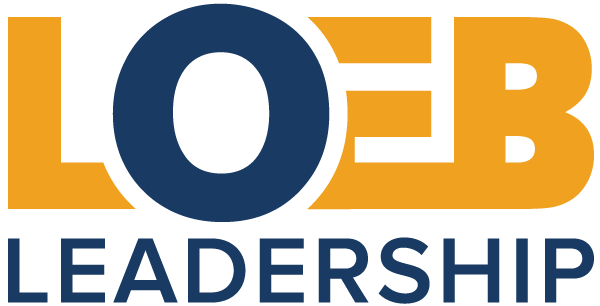How to Determine Your Leadership Style
Strong leadership isn’t one-size-fits-all. Some leaders are bold visionaries who inspire with passion and energy. Others are calm, measured collaborators who prioritize trust and consensus. Great leadership takes many forms.
Many leaders operate on instinct, without taking the time to evaluate how their natural behaviors align with what their team or organization needs most. That’s where a leadership style assessment and intentional reflection come into play. Understanding your leadership style isn’t just about labeling yourself—it’s about gaining insight, adjusting when needed, and leading with purpose. In this blog, we’ll explore how to evaluate your leadership style, why it matters, and how this knowledge can support better decision-making, team development, and long-term growth.
Why Your Leadership Style Matters
Your leadership style affects everything—from how you make decisions to how your team communicates, collaborates, and innovates. It shapes your organization’s culture and plays a critical role in team engagement and performance.
For example, a highly directive leader might be effective in crisis situations but could unintentionally stifle creativity during periods of growth. A collaborative leader might foster strong relationships but may struggle with making tough calls under pressure. Knowing where your strengths lie and where you may need to adapt is essential to becoming a more effective, emotionally intelligent leader. That’s why corporate leadership training in New Jersey and beyond increasingly integrates leadership self-evaluation and coaching. Leaders who understand their own behavior can better align with organizational goals, manage diverse teams, and lead with empathy and confidence.
Start with Self-Evaluation
The first step in determining your leadership style is conducting a leadership self-evaluation. This process helps you reflect on your habits, preferences, values, and blind spots. It’s more than a personality quiz—it’s an intentional review of how you show up for your team.
Start by asking yourself these key questions:
How do I typically make decisions—quickly and independently, or collaboratively and methodically?
How do I respond to team conflict or underperformance?
Am I more focused on results, relationships, or structure?
Do I prefer to delegate or stay involved in details?
How comfortable am I with risk, innovation, and change?
You might also seek feedback from colleagues, mentors, or coaches. External perspectives can shed light on patterns you may not see on your own.
Using a Leadership Style Assessment
For a more structured approach, many organizations use formal leadership style assessments to evaluate leadership tendencies and effectiveness. These tools can include:
DISC Assessment: Measures behavior in four areas—Dominance, Influence, Steadiness, and Conscientiousness.
MBTI (Myers-Briggs Type Indicator): Identifies personality type and how it relates to leadership tendencies.
360-Degree Feedback: Gathers insights from peers, direct reports, and supervisors to provide a full picture of your leadership impact.
Emotional Intelligence (EQ-i 2.0): Assesses your ability to understand and manage emotions—critical for empathetic leadership.
At Loeb Leadership, we incorporate a variety of assessments into our corporate leadership training and consulting services to help clients gain insight into their leadership identity and how it influences team dynamics.
Common Leadership Styles
While no two leaders are the same, there are several well-recognized leadership styles. These categories can serve as a framework to help you identify your primary tendencies.
Transformational Leader
You’re a big-picture thinker who inspires others with vision and purpose. You thrive on innovation and are constantly pushing for growth.
Strengths: Motivation, inspiration, creativity
Challenges: May overlook details or people struggling with change
Transactional Leader
You value structure, order, and clear expectations. You set performance benchmarks and reward accountability.
Strengths: Efficiency, consistency, performance focus
Challenges: Can seem rigid or overly focused on rules
Servant Leader
You prioritize the well-being and development of your team. You listen deeply and lead with empathy.
Strengths: Trust-building, emotional intelligence, team loyalty
Challenges: May struggle with making unpopular decisions or setting boundaries
Democratic Leader
You seek input from others and value collaboration. You’re a facilitator more than a commander.
Strengths: Inclusion, team engagement, collective decision-making
Challenges: Decision-making can be slow or unfocused
Autocratic Leader
You prefer control and clear direction. You make decisions independently and expect quick execution.
Strengths: Clarity, control, fast decisions
Challenges: Can limit autonomy, creativity, and morale
Remember: Most leaders are a blend of styles. The goal isn’t to force yourself into a single box, but to understand your natural preferences—and when to adjust based on context.
The Role of Coaching and Training in Leadership Growth
Once you’ve identified your style, how do you put it into practice? This is where coaching and leadership training come in. Coaching provides a space for reflection, feedback, and strategy—helping leaders apply what they’ve learned in real time. Training builds shared language and tools across leadership teams, improving alignment and collaboration.
At Loeb Leadership, we guide professionals through the full journey—from leadership style assessments to development planning and integration. Our programs are designed to support leaders across sectors, whether you're an attorney navigating client demands, a new manager leading a team for the first time, or a senior executive preparing for succession.
Know Yourself, Lead Better
Understanding your leadership style is more than a personal insight—it’s a strategic advantage. It helps you build stronger relationships, communicate more effectively, and create an environment where your team can thrive.
If you’re asking, “What is my leadership style?”—you’re already on the path toward becoming a more self-aware, impactful leader. With the right tools and support, you can turn that question into clarity, and that clarity into action. Let Loeb Leadership help you identify your leadership style and apply it with purpose. We’re here to support your growth, so you can lead with confidence and inspire with clarity. Contact us today to learn more about our customized leadership solutions.

